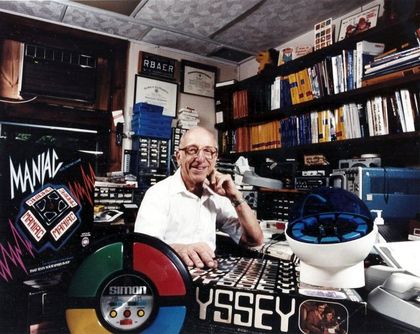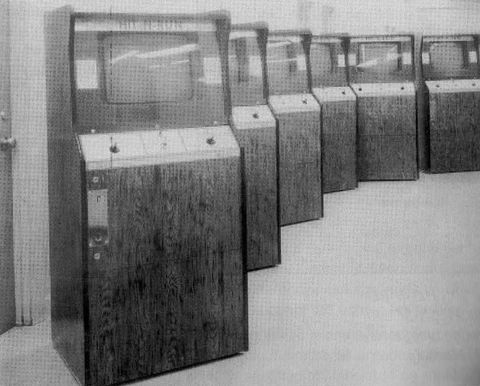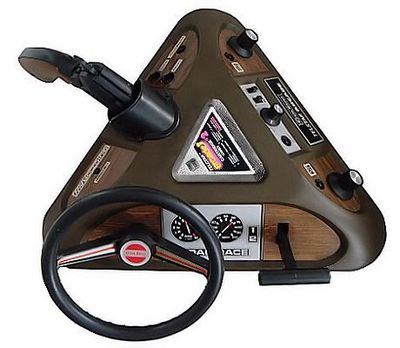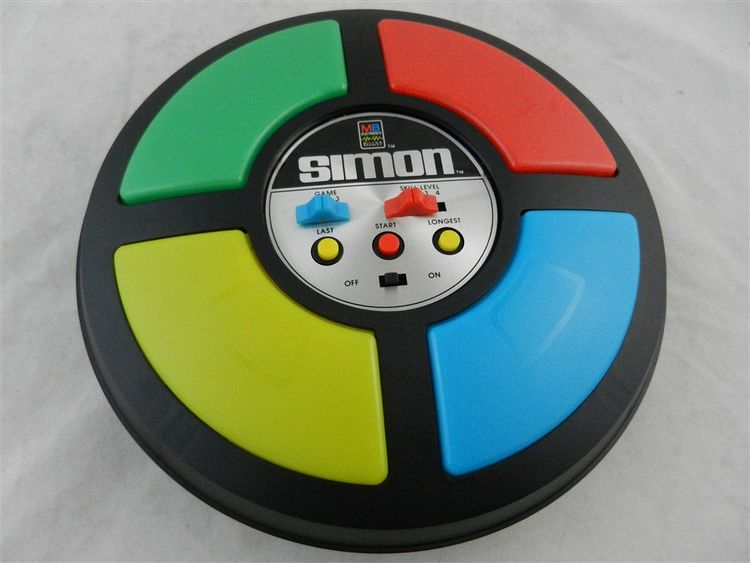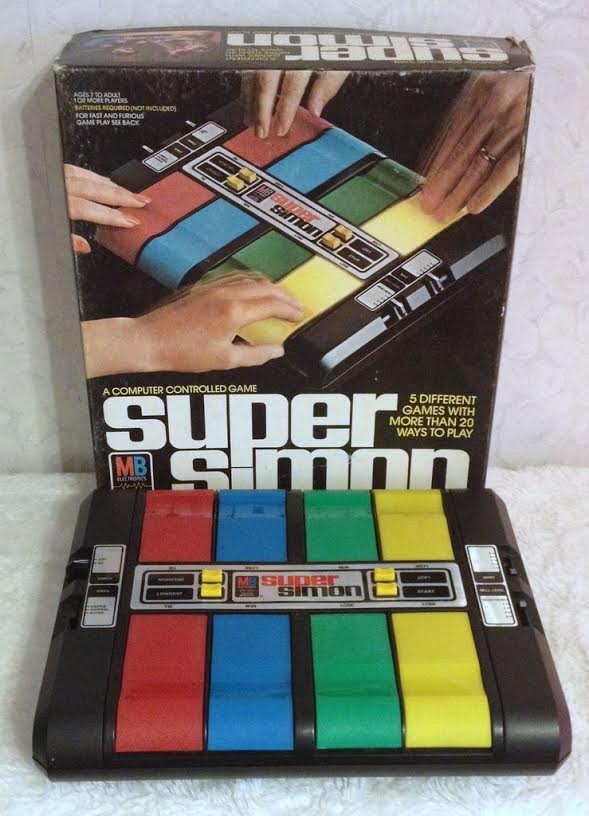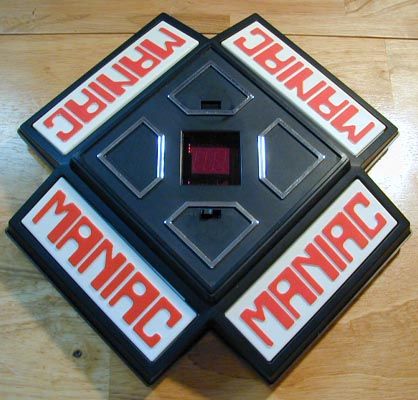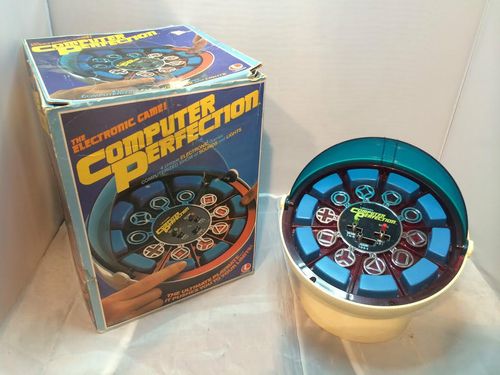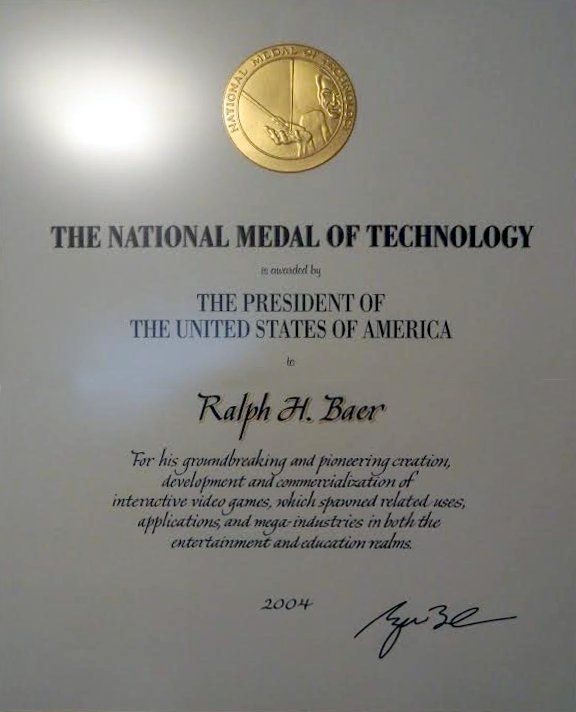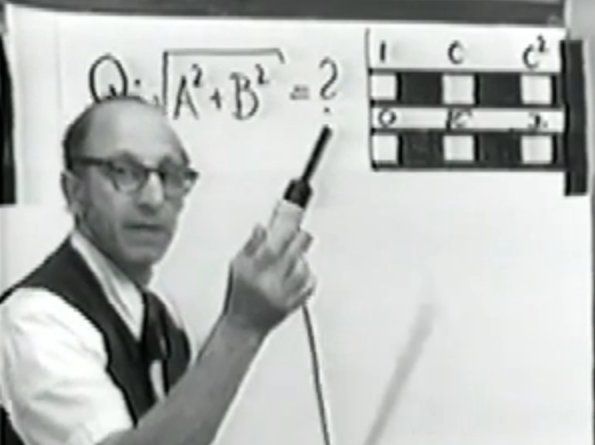Ralph Baer:
His Inventions & Legacy
By Mike Stulir, Vice President, The American Classic Arcade Museum
Ralph Baer, the “Father of Videogames” is best known for his groundbreaking work creating the first video game console, the Magnavox Odyssey. While the initial ideas came to him in the early 1950s, Ralph developed this early video game technology in the mid to late 1960s while employed at Sanders Associates, a large defense contractor located in Nashua, NH.
Ralph’s invention, the “Brown Box,” went on to become the Magnavox Odyssey. It may not have had scoring, or sound, or any other things we take for granted in gaming today. However, it had a ping pong game that became a phenomenon.
When I questioned Ralph about that ping pong game while creating material for the ACAM Education Program, Baer said “We should have stopped after we developed ping pong, because that is all people really wanted to play. We stretched the project out for another year and added new games, but ping pong was always the game people demanded.”
I had always thought that many of these early games did not have single-player components due to the technology of the day, but Ralph surprised me when I asked about the advent of single-player games. “We never tried to make any one player games. The intent was family entertainment. It was always assumed there would be multiple players.”
While most people think of the “Brown Box” as being Ralph’s only claim to fame, Ralph was also was involved in a number of video game projects throughout the 1970s. Some of those include:
Sanders Arcade Games:
In 1973, Ralph Baer attended a Music Operators of America trade show on behalf of Sanders & Magnavox to examine coin-op arcade video games that may infringe on his patents. While presenting a report to Sanders management upon his return, an Executive asked why coin-op gaming was not being pursued if it was lucrative. This led to the development of three games over the course of several months in 1974: Hit-N-Run, Pro Soccer & Skate-N-Score. All three games were enhancements of the previous tennis/ping pong-style games. Ralph described these games as all essentially being the same except for different player character art. Also, the Hockey game added a center face-off spot in the center of the screen. In all, ten complete working games were constructed for testing. Ralph stated that several of these games were placed in an arcade called Electro Games. Ralph’s recollection was that the arcade was located in Salem, NH. (Note that ACAM’s research shows the arcade was located in East Hampstead, NH. The actual location has never been confirmed by ACAM.) The arcade owner, Russ Gosselin, stated that the Sanders games out-earned similar games from Midway & Atari by a factor of two to one. Despite this, Ralph said the games were never produced due to corporate interference within Sanders and unresolved issues with the Magnavox licensing agreements.
Coleco Telstar:
While Ralph was not directly involved in the creation of this tennis/ping pong-style console, Ralph & his team at Sanders were called upon to assist when the unit failed FCC testing prior to manufacturing. In particular, the game had an issue with frequency stability on the channel 3/channel 4 output oscillator. Ralph solved this problem with a series of ferrite cores wrapped around the RF output cable that connected the game to the TV antenna. The game later passed FCC testing and went on to be the highest selling game console of the 1976 Christmas season.
Coleco Telstar Alpha:
Based on the Coleco Telstar hardware, the Alpha was more or less identical to its predecessor, but with the addition of a fourth game based off the squash racquet game.
Coleco Telstar Arcade:
An odd three-sided triangular console with a gun, a steering wheel & paddle controls for Pong games, the system programming was via cartridge. A cartridge containing Tennis, Quick Draw and Road Race was included with the system. Tennis was identical to Pong, Quick Draw was a Wild West shooter game, and Road Race was very similar to the Wheels arcade game by Midway. An additional 3 cartridges were released and were available for $25 each. Ralph described his work on this unit as “detail design.”
Coleco Combat:
Based off of the Kee Games/Atari Tank series of arcade games, Combat presented an overhead perspective of a one-on-one tank battle between two players. Like the Telstar Arcade, Ralph described his work on this title as “detail design.”
Ralph was also involved in a number of toys & electronic handheld games:
Simon:
Created by Ralph Baer & Howard J. Morrison, Simon takes its name from the children’s game Simon Says. The gameplay is based on a coin-op arcade game produced by Atari in 1974 called Touch Me. In Touch Me, a series of four lighted buttons blink in a certain sequence, and the player must then push the buttons in the same sequence. The arcade game was not particularly popular. Ralph felt this game had much more potential and set off to create his own version. Ralph incorporated musical notes & colored lights. Simon was released in 1978 by Milton Bradley, and was one of the hottest selling games of the 1978 Christmas season.
Simon
Amaze-A-Tron:
Manufactured by Coleco, Amaze-A-Tron featured eight different game variations that required the player to get from point A to point B "movers" to find the correct path. The game had over one million variations in mazes, the every game was always different.
Ralph’s consulting work involved working with Hallmark on the first talking greeting cards, and Bacova on talking door mats. He invented a number of talking toys, two interactive stuffed bears, and talking books.
To me, one of the most fascinating things he pursued was the concept of interacting directly to your television. Baer had all kinds of ideas for using the television as more than watching programming or playing games. He envisioned educational opportunities, and even shopping via the television. He found ways to make those ideas work & created a presentation showing how this technology could be used.
When that presentation was made with the technology Ralph and his team developed, the question was raised within Sanders as to who would produce and market this technology. Ralph replied by saying “The cable business. CATV was in its infancy, and the thought of doing something interactive via cable was fascinating to me.” Ralph pursued that idea for a number of years, but never made any headway. “We made a briefing broadcast showing how interactive gaming, interactive education and even impulse buying could be done over CATV systems. I evangelized the idea and we talked to every major company in the cable business. We could make everything work. The bottom line was that the concept came at least 20 years too soon. The Internet changed everything, and now these ideas are commonplace.”
Ralph had a mind that was always thinking of the next “big thing” and working on ideas for the future. To recognize his contributions over the years, President George W. Bush awarded Baer with the National Medal of Technology during a ceremony at the White House in 2004. The medal was awarded to Ralph “For his groundbreaking & pioneering development and commercialization of interactive video games, which spawned related uses, applications, and mega-industries, in both entertainment and education realms.” The National Medal of Technology symbolizes the great American story – the freedom and opportunity for innovation and achievement.
Ralph Baer's certificate for his National Medal of Technology
ButtonRalph Baer’s creations shaped many aspects of our lives. From video games, to handheld electronic games to toys to educational applications, Ralph created futuristic devices to educate and entertain. All of us at ACAM enjoyed our experiences with him going back to 2002. High points for us would be our many trips to Ralph’s home to interview him & study his inventions, and his appearance at our annual videogame tournament in 2007. ACAM is proud to be able to educate future generations about the birth of the videogame industry via the “Brown Box” replica he constructed, and the “Video Toss” game he donated to us. He was a truly charming and selfless individual. He will be missed.
Ralph Baer demonstrates interactive educational TV in a 1969 technology presentation video
For more information about the creations of Ralph Baer, visit his web site at www.ralphbaer.com
All historical photos courtesy of Ralph Baer

